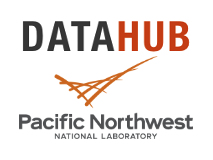Journal Article
Atmospheric Chemistry and Physics, vol. 20, iss. 23, pp. 14597-14616, 2020
Authors
Brigitte Rooney, Yuan Wang, Jonathan H. Jiang, Bin Zhao, Zhao-Cheng Zeng, John H. Seinfeld
Abstract
Abstract. The Northern California Camp Fire that took place in November 2018 was one
of the most damaging environmental events in California history. Here, we
analyze ground-based station observations of airborne particulate matter
that has a diameter <2.5 µm (PM2.5) across Northern
California and conduct numerical simulations of the Camp Fire using the
Weather Research and Forecasting model online coupled with chemistry
(WRF-Chem). Simulations are evaluated against ground-based observations of
PM2.5, black carbon, and meteorology, as well as satellite
measurements, such as Tropospheric Monitoring Instrument (TROPOMI) aerosol
layer height and aerosol index. The Camp Fire led to an increase in Bay Area
PM2.5 to over 50 µg m−3 for nearly 2 weeks, with
localized peaks exceeding 300 µg m−3. Using the Visible Infrared
Imaging Radiometer Suite (VIIRS) high-resolution fire detection products,
the simulations reproduce the magnitude and evolution of surface PM2.5
concentrations, especially downwind of the wildfire. The overall spatial
patterns of simulated aerosol plumes and their heights are comparable with
the latest satellite products from TROPOMI. WRF-Chem sensitivity simulations
are carried out to analyze uncertainties that arise from fire emissions,
meteorological conditions, feedback of aerosol radiative effects on
meteorology, and various physical parameterizations, including the planetary
boundary layer model and the plume rise model. Downwind PM2.5
concentrations are sensitive to both flaming and smoldering emissions over
the fire, so the uncertainty in the satellite-derived fire emission products
can directly affect the air pollution simulations downwind. Our analysis
also shows the importance of land surface and boundary layer
parameterization in the fire simulation, which can result in large
variations in magnitude and trend of surface PM2.5. Inclusion of
aerosol radiative feedback moderately improves PM2.5 simulations,
especially over the most polluted days. Results of this study can assist in
the development of data assimilation systems as well as air quality
forecasting of health exposures and economic impact studies.
